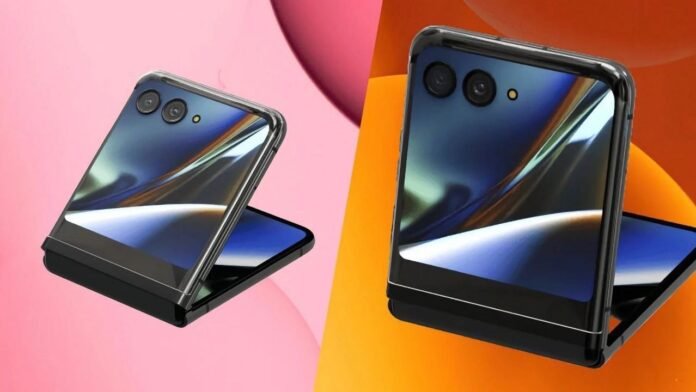Samsung’s original Galaxy Flip was the phone that taught me to love foldable phones. Before the launch of the clamshell, devices were big and bulky, like the Galaxy Fold. Rather than embracing portability, the goal was jamming as much screen real estate as possible into a pocketable design. In the case of the Fold, the result was massive, even when closed.
The Unexpected Success of the Galaxy Flip Foldable
The Flip’s success appeared to catch Samsung by surprise. Despite the advertising support it pumped into the Fold, the clamshell Flip captured 70% of the company’s foldable sales in 2021 — a year after it initially launched. Portability and a substantially lower price point won the day, helping catapult Samsung foldable shipments to 10 million that year.
Rising Competition in the Foldable Market
Samsung is still the 500-pound gorilla in foldable, but the company’s successes have made the category significantly less lonely in recent years. Increased competition has improved the market, bringing device diversity and causing the kingpin to rethink a few of its orthodoxies.
Foldable Improvements and Adjustments
Of recent vintage is the decision to widen the Fold’s narrow front-facing screen a touch. It’s not a big difference (neither the Z Fold 6 nor the Z Flip 6 offered much in the way of difference), but it is, perhaps, a response to feedback around what’s always been an awkward aspect ratio.
The Need for Continuous Innovation Foldable
With a device like the Fold, sheer novelty keeps consumers interested for a few years. However, attention spans are short in consumer electronics. The early adopter shine wears off after a few generations of refinements. That’s doubly the case when competitions like Google’s Pixel Fold and the OnePlus Open bring new ideas.
Motorola’s Unexpected Comeback
However, one of the most compelling competitors has been from a more unexpected corner of the mobile world. I admit that I wrote off Motorola’s foldable Razr when it was announced a few months after Samsung’s first Fold went on sale. It was a novelty in its own right: an exclusive to slap a beloved but bygone brand on a new device. It felt like the cynical product of the Hollywood reboot era.
Initial Struggles of the Razr
The 2020 Razr’s reception wasn’t helped by the fact that, much like the first Fold, it arrived half-baked. The specs did not warrant the $1,200 price tag, and the folding mechanism left much to be desired. For a while, it felt like the whole foldable category would be a blip on the radar.
The Staying Power of Foldables
Thus far, foldables haven’t moved the needle much regarding slowing smartphone sales, but the form factor has staying power. According to Counterpoint Research, the global foldables market grew 49% year-on-year in the first quarter of 2024. Huawei, an early entrant into the category whose growth was significantly hampered thanks to issues with the U.S. and other foreign governments, had a banner quarter as it overtook Samsung for the first time.
Market Dynamics and Growth Foldable
While Huawei remains barred from sales in the U.S., it saw a sizable 257% year-on-year growth for the quarter. The shipments were primarily in Huawei’s native China, driven by its long-awaited switch from LTE to 5G with the form factor. Fellow Chinese company Motorola saw massive growth globally, jumping a jaw-dropping 1,473%. Samsung dropped 42% for the quarter but maintained the No. 2 spot globally, with 23% of the total market.
Anticipation for New Devices
Both the Fold/Flip 6 and the Motorola Razr+ are too new to have had a meaningful impact on quarterly shipments, but I anticipate both seeing notable growth due to their well-reviewed devices.
The Challenge for Samsung
Samsung’s most significant challenge is finding ways to keep the category exciting. Gaining market share is no longer simply a matter of education. The company must convince non-foldable owners that it’s time to make the leap and nudge existing customers into a refresh — a tall order when the Fold and Flip start at $1,900 and $1,100, respectively.
Samsung vs. Motorola Foldable
The Flip 6 still bests the Razr+ on imaging, something Samsung has long excelled in. But Motorola learned from its early mistakes and has delivered a tremendous folding experience. The design and the nearly edge-to-edge 3.6-inch front-facing display look great. Motorola’s real secret weapon, however, is price.
Price Wars and Market Strategy
While $1,000 doesn’t sound great on the surface, the handset is perpetually on discount. It launched early this week with a $100 discount. Its 2023 predecessor, meanwhile, can be purchased from Amazon for $600 right now.
Future Innovations in Foldables
For its part, Samsung has been rumored to be working on a more affordable version of the Fold, which will be available later this year, though the company may have waffled on that. It’s a shame since Samsung is no longer the only game in town, and the next real innovation in foldables will be affordability.


